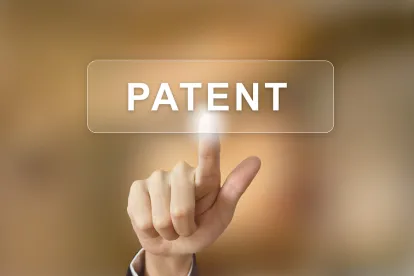Takeaway: There is no initial burden on a petitioner to rebut a priority date, but including such an argument in a petition may be advisable because there is generally no opportunity to submit additional evidence or argument at the institution stage after the patent owner’s preliminary response.
In its Decision, the Board instituted Post-Grant Review of the ‘292 patent. The ‘292 patent is titled “Multi-Spectrum Lighting Device with Plurality of Switches” and “generally describes a multi-spectrum emitting device” that is “capable of emitting a first spectrum and a second spectrum and includes switching elements configured to change the emitted light from the first spectrum to the second spectrum.”
The post-grant review provisions “apply only to patents subject to the first-inventor-to-file provisions of the AIA,” which itself apply to “any application for patent, and to any patent issuing thereon, that contains or contained at any time a claim to a claimed invention that has an effective filing date on or after March 16, 2013.” Further, “[a] petition for a post-grant review may only be filed not later than the date that is 9 months after the date of the grant of the patent.” 35 U.S.C. § 321(c). Here, the Board determined that the ‘292 patent meets the eligibility requirements for post-grant review because Petitioner asserted, and Patent Owner did not deny, that the priority chain was broken after the effective date of the AIA first-inventor-to-file provisions by the addition of new matter. There was also no dispute that the petition was filed within 9 months of the grant of the ‘292 patent.
Patent Owner raised three alleged global defects in the Petition: (1) that Petitioner has not adequately contested the priority of the claims of the ’292 patent; (2) that Petitioner’s obviousness analysis is inadequate for failing to explain the differences between the references and for failing to provide an adequate rationale for the obviousness combination; and (3) that Petitioner misconstrues one term and fails to provide claim constructions for six other, allegedly “material,” claim terms.
Regarding the priority date, “Patent Owner argues that the Petition fails to meet ‘its initial burden of demonstrating that the ’292 patent is not entitled to the November 23, 2009 or November 21, 2008 priority date.’” The Board, however, did not agree “that Petitioner has the initial burden of showing that the ‘292 patent is not entitled to an earlier priority date for unpatentability purposes.” Rather, “[c]ontrary to Patent Owner’s position, the only showing Petitioner needed to make is that ‘the art must have existed as of the date of invention, presumed to be the filing date of the application until an earlier date is proved.’” The Board found that “the law is clear that there is no initial burden on Petitioner to rebut a provisional date.” See Dynamic Drinkware, LLC v. Nat’l Graphics, Inc., 800 F.3d 1375, 1379-80 (Fed. Cir. 2015) (the initial burden of production for showing an earlier priority date rests with the patent owner, not the petitioner). The Board, however, did suggest in a footnote that best practices for a petitioner would be to include such argument because “[a]lthough the patent owner initially bears the burden of production on the issue of priority, there is generally no opportunity for a petitioner to submit additional evidence or argument at the institution stage.” In the case at hand, the Board found that Petitioner’s showing was sufficient to establish that certain references were indeed prior art based on the effective priority date.
The Board next addressed Petitioner’s obviousness analysis, finding that the “Petition adequately lays out where the elements are found in the prior art and clearly explains what it is doing and why.” The Board “decline[d] to prescribe, beyond the requirements of our rules and statute, how the Petitioner must present its case.” The Board also found adequate rationale for combining the references articulated by Petitioner.
Finally, the Board rejected Patent Owner’s argument that the petition should be denied because Petitioner failed to provide constructions for certain terms alleged to be “material to determining whether trial should be instituted.” “A petitioner cannot anticipate every claim construction argument that a patent owner will raise,” which “is particularly true when there has been no other litigation between the parties regarding the patent.” In any event, the Board did not agree with Patent Owner that most of its “material” terms need construction.
The Board then addressed claim construction under the broadest reasonable interpretation and turned to the asserted grounds of unpatentability. After analysis of the obviousness challenges, the Board found “that the information in the Petition establishes that it is more likely than not that claims 1-9 and 16-20 of the ‘292 patent are unpatentable.” Thus, the Board granted institution.
Core Survival, Inc. v. S & S Precision, LLC, PGR2015-00022
Paper 8: Institution of Post-Grant Review
Dated: February 19, 2016
Patent: 8,882,292 B2
Before: Beverly M. Bunting, Kevin W. Cherry, and Charles J. Boudreau
Written by: Cherry



 />i
/>i


